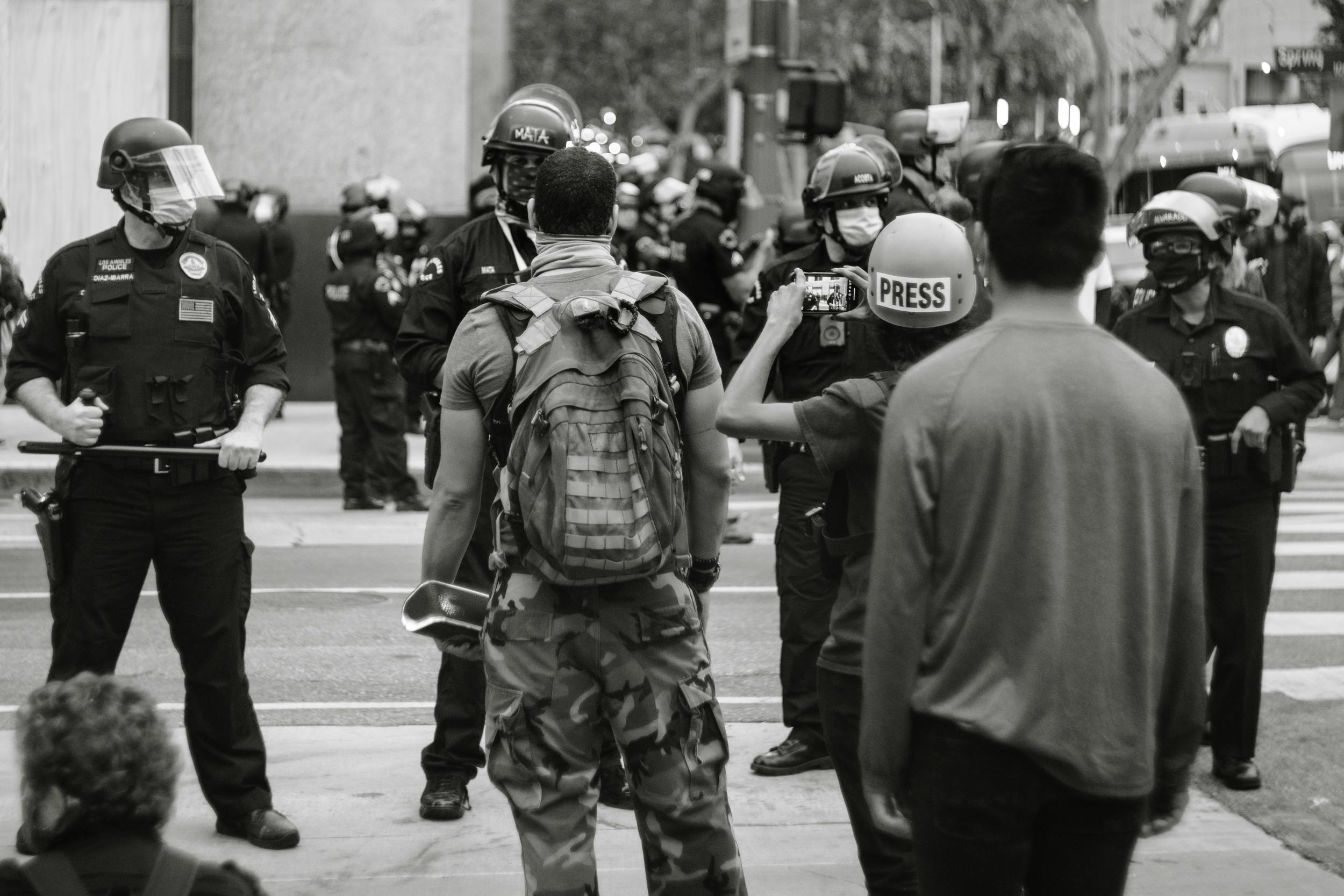Tactical training
How to recognize different military tactical formations and why they are used. Through my time at ROTC and some research, I have learned many different tactical formations and why they are used. Next, I will give the name of the training, then what they are used for and in what kind of situations they would be put into action.
Arrowhead:
This type of formation is formed with a squad of five. The shape of the formation is one person as a tip and then two angled on each kick. In this formation, the squad leader is at the point of formation. This is usually followed by a grenadier, two riflemen, and a machine gunner. This type of formation is used when assaulting an enemy position, due to its great firepower. In ROTC, we were told that this formation is more for a frontal assault because if you are flanked on one side you don’t have as much firing lane to the sides as you would aiming in front because you have friendlies in the way if you shoot to the opposite side. One situation they put me in during ROTC was that my squad was supposed to find and eliminate the enemy on the opposite side of a park. While we were in the open air, we were in a tight arrowhead formation marching towards the supposed enemy. This gave us eyes on the entire environment, but we would have to reform if we faced each other from our flank. The information they gave us was that there were no tangos in the area except for the specific compound, so we took the risk of using the arrowhead instead of the column formation, which you will learn about later in the article. The use of the arrowhead gave us the most firepower going forward as we approached the compound. Once we reached the wall of the complex, we left the arrowhead and entered our infiltration plan around the complex. If we had faced the wall, we would have had all our firepower down range without reforming.
Column:
This type of formation is one of the simplest and best when it comes to keeping flanks supported. This training is what it sounds like. The squad lines up one behind the other. This formation allows good communication from the front, and also for patrolling. There are two types of column (stepped column and normal column) and in this article I am referring to the normal column. This formation is generally used when patrolling dangerous areas. The reason this formation is used for patrol is because you have a good field of view on both sides that allows plenty of firepower on both sides and if faced from the front it easily becomes a line formation. There are also variations on this formation on where the squad leader is placed. They can be in front of the group, which is not so common in my experiences. They can then be in the middle of the pack, which is the first way they taught me. Then the squad leader can bring his back. The reason for the different points is for different situations. For example, for a squad leader to be in the middle, it allows him to communicate better with the entire squad and also to stay well protected. Some scenarios where you would use a column formation is that you are traversing a narrow area where you cannot fit other formations. For example, if your squad is in an urban setting, this would be a good formation to go between buildings because it actually only gives the enemy one target to shoot at. Another scenario where the column formation would be the initial formation was that if you were in an open field patrolling, you would choose the staggered column to allow the most open and direct firepower in any direction possible.
Line:
This formation is like the spine but with a ninety degree turn. In this formation, this formation the squad leader is in the middle of the squad. This allows them to command the entire squad easily with their commands or hand signals. A line formation is mainly used for organization, briefings and debriefings, etc. It is a sister formation, the line of fire is used in combat much more often than just the line formation.
These next formations are for when you are protecting a VIP from enemies.
Diamond:
This formation is where four soldiers or bodyguards form a diamond figure with the VIP in their midst. The reason this line-up works well is because it puts a body between the tango and the VIP. Another reason this is such a good training for protection is because it has a rifle that covers each side of the VIP. This allows for three hundred and sixty degrees of firepower. In my experience this is for faster paced protection than a bodyguard type of protection. What I have seen this used for is when there is an active shooter in the area and you are leading the VIP to a safe area. This formation is a much more closed formation than the next formation called a box. What I mean by that is that the soldiers are more in front of the VIP than scattered.
Box:
This formation is like the diamond but more widespread and is in a box around the VIP instead of a diamond. This formation is used to protect VIPs and also to cover all angles from enemy fire. Being more widespread than diamond, this is a slower paced protection. This formation also allows two people to have the same line of fire, allowing more firepower in that direction than the diamond would have.
